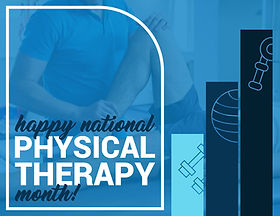Doc Talk: Rethinking Rotator Cuff Repairs with Dr. David Goodwin
- Arthritis & Sports
- Aug 21, 2024
- 4 min read

Rotator cuff injuries are a common condition, especially among athletes and older adults, which leads to shoulder pain and impaired function. Historically, rotator cuff repair has been a challenging surgical procedure with varying success rates. However, recent advances in surgical techniques and postoperative care are revolutionizing outcomes for patients, offering hope for quicker recovery and improved long-term function.
In many cases, non-operative approaches, such as physical therapy and platelet-rich plasma injections have dramatically improved his patients’ shoulder function. However, in severe cases, surgical intervention is needed to restore his patients’ quality of life.
Understanding Rotator Cuff Injuries
The rotator cuff is responsible for stabilizing the shoulder joint and enabling a wide range of movements. It is comprised of a group of four muscles and their associated tendons. Injuries to the rotator cuff can result from acute trauma, repetitive overhead activities, or degenerative changes over time. Symptoms typically include shoulder pain, weakness, and limited range of motion. While non-surgical treatments like physical therapy and anti-inflammatory medications are often the first line of defense, surgery becomes necessary when these methods fail.
Traditional Surgical Approaches
For decades, open surgery was the standard approach for rotator cuff repair. This involved making a large incision to access the shoulder joint, which often resulted in significant postoperative pain, longer recovery times, and a higher risk of complications. The development of arthroscopic techniques marked a significant improvement, allowing surgeons to repair the rotator cuff through smaller incisions using specialized instruments and a camera to guide the procedure. Despite these advancements, challenges remained, including unacceptable high re-tear rates and incomplete healing.
Advances in Surgical Techniques
Recent innovations in rotator cuff repair techniques are transforming patient outcomes. Here are some key advancements:
1. Biological Augmentation
Biological augmentation involves using biological materials, such as platelet-rich plasma (PRP) or stem cells, to enhance the healing environment of the rotator cuff. PRP, derived from the patient’s own blood, contains growth factors that promote tissue repair. Stem cells, obtained from bone marrow or adipose tissue, have the potential to differentiate into tendon cells, which can accelerate the healing process. These biological adjuncts can be applied during surgery to improve tendon-bone integration and reduce re-tear rates.
2. Double-Row Repair
The double-row repair technique is biomechanically the strongest construct in rotator cuff surgery. It has gained popularity for its ability to provide a more robust repair. Traditional single-row repairs often left gaps between the tendon and bone, leading to incomplete healing. Double-row fixation involves anchoring the tendon to the bone at multiple points, creating a more secure and anatomically accurate repair. This technique has been shown to enhance tendon healing and reduce the likelihood of re-tears.
3. Superior Capsule Reconstruction (SCR)
For massive or irreparable rotator cuff tears, superior capsule reconstruction (SCR) offers a promising solution. SCR involves using a graft, typically from a donor, to reconstruct the superior capsule of the shoulder. This technique restores shoulder stability and function, allowing patients with previously irreparable tears to regain significant mobility and strength.
4. Minimally Invasive Techniques
Minimally invasive techniques continue to evolve, further reducing the invasiveness of rotator cuff repair surgeries. Advances in arthroscopic equipment and techniques allow surgeons to perform repairs with smaller incisions, less tissue disruption, and reduced postoperative pain. These approaches not only enhance recovery but also minimize scarring and the risk of complications.
Postoperative Rehabilitation and Pain Management
Advancements in surgical techniques are complemented by improvements in postoperative rehabilitation and pain management. Early mobilization and tailored physical therapy programs are crucial for optimizing recovery, helping patients regain strength and function more quickly. Multimodal pain management strategies, including nerve blocks and non-opioid medications, are also improving patient experiences by effectively controlling pain and enabling early rehabilitation efforts.
The Future of Rotator Cuff Repairs
As technology and medical research continue to advance, the future of rotator cuff repairs looks promising. Ongoing studies are exploring the potential of gene therapy, tissue engineering, and novel biomaterials to further enhance healing and functional outcomes. Additionally, the integration of artificial intelligence and robotic-assisted surgery may revolutionize the precision and effectiveness of rotator cuff repairs.
The field of rotator cuff repair is undergoing a significant transformation, driven by innovative surgical techniques and improved postoperative care. These advancements are translating into better patient outcomes, with reduced pain, faster recovery, and enhanced shoulder function. As research and technology continue to evolve, the future holds even greater promise for individuals suffering from rotator cuff injuries, offering them a renewed opportunity for an active and pain-free life.
Shoulder pain got you down? Our award-winning fellowship-trained providers are here to help you shrug off discomfort and embrace comfort! We invite you to call us at 703.444.5000 to schedule an appointment with Dr. Goodwin or click here to request an appointment. To stay up-to-date on the latest news and tips from us, be sure to follow us on Facebook and Instagram, and sign up for our monthly newsletter for even more information sent straight to your inbox!



























